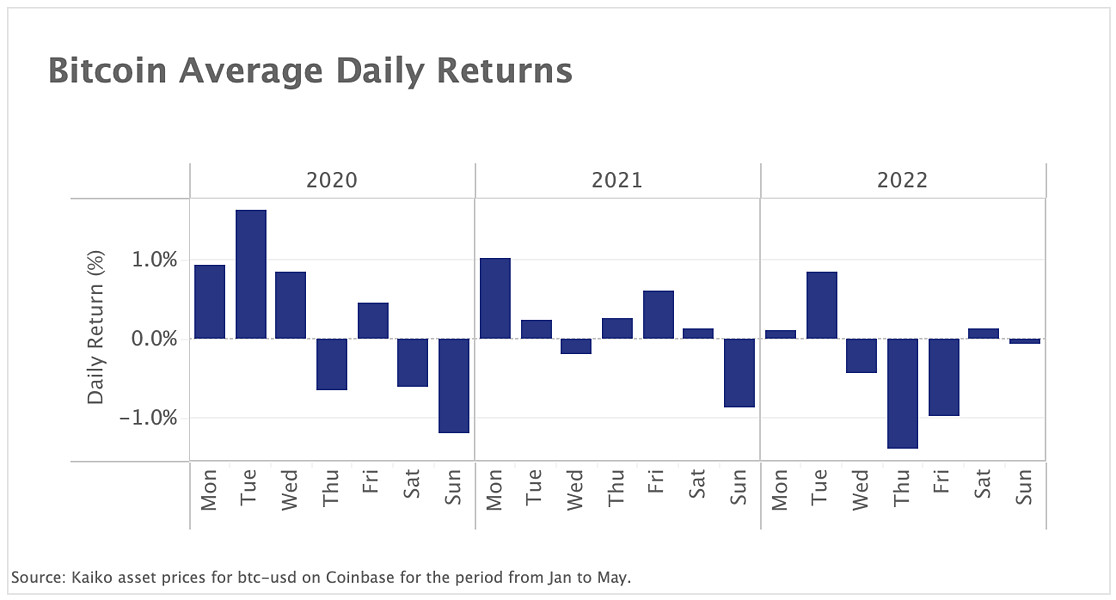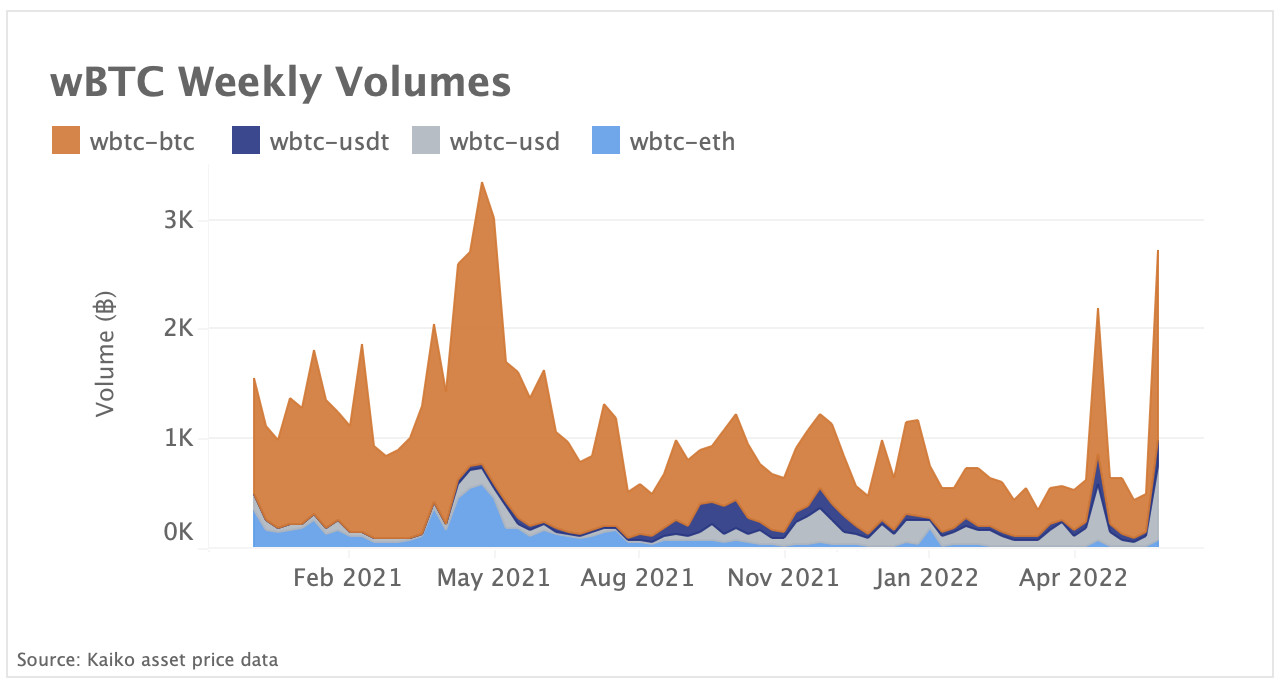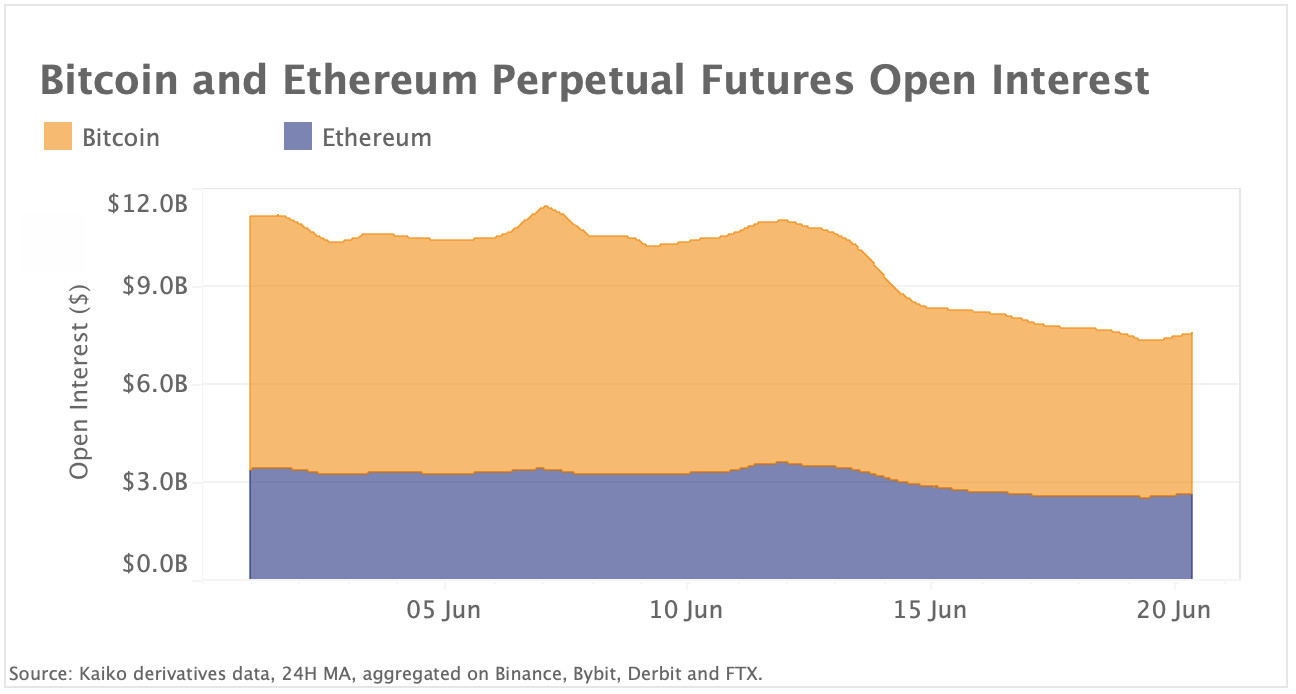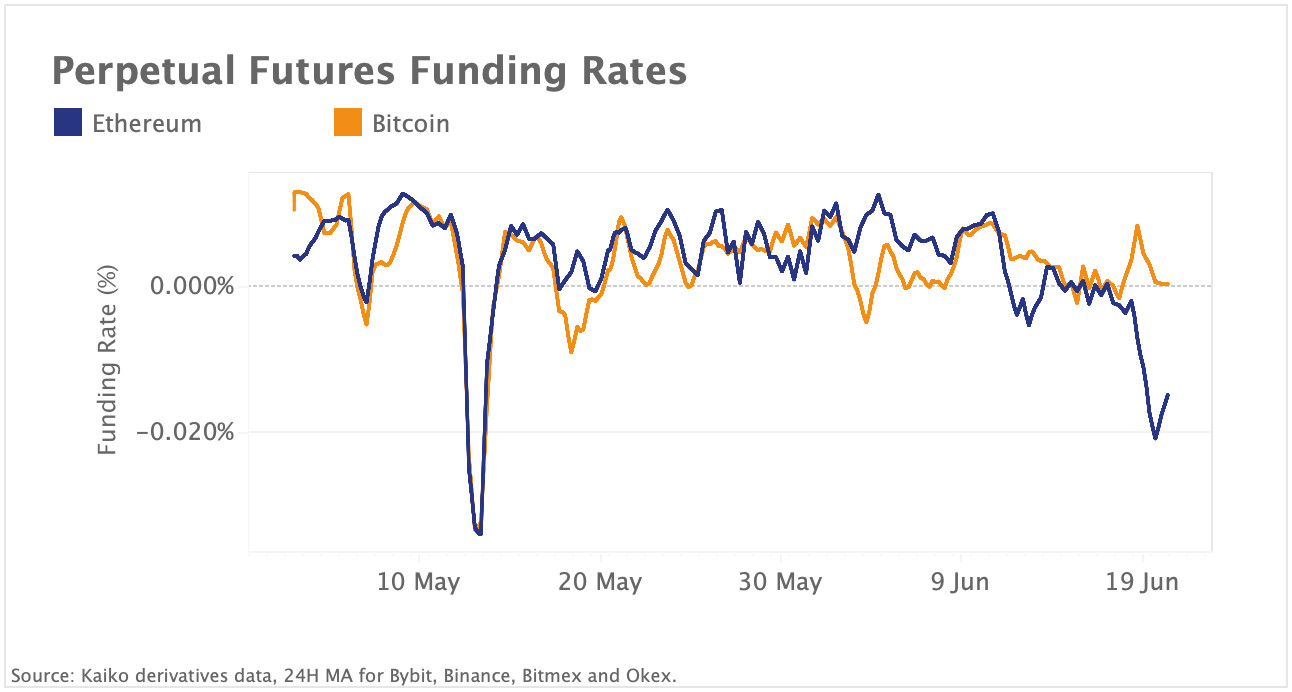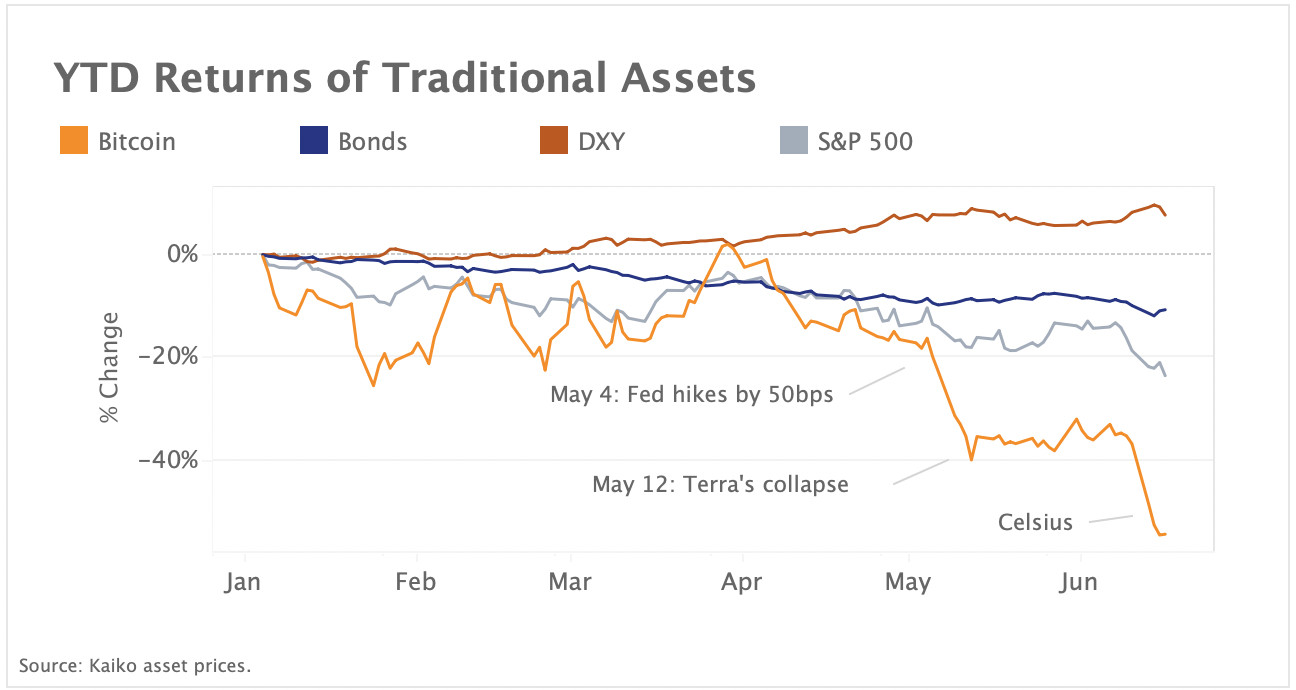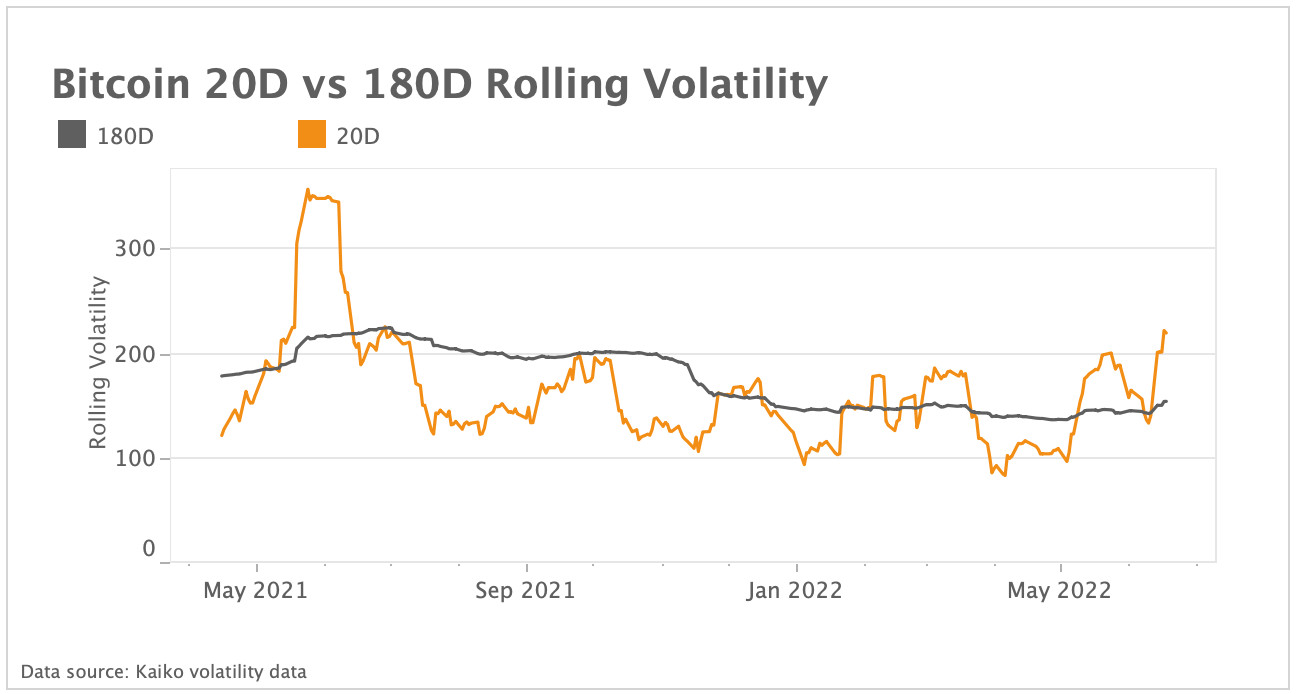A summarizing review of what has been happening at the crypto markets of the past week. A look at trending sectors, liquidity, volatility, spreads and more. The weekly report in cooperation with market data provider Kaiko.
The last 7 days in cryptocurrency markets:
- Price Movements: BTC and ETH slide below $18k and $1k respectively over the weekend but bounce overnight.
- Order Book Liquidity: FTX’s ETH market depth remains steady despite large Celsius inflows.
- Derivatives: BTC and ETH open interest plummets as markets deleverage.
- Macro Trends: U.S. Fed approves largest policy rate increase in 28 years.
Bitcoin slides below $18k, lowest since 2020
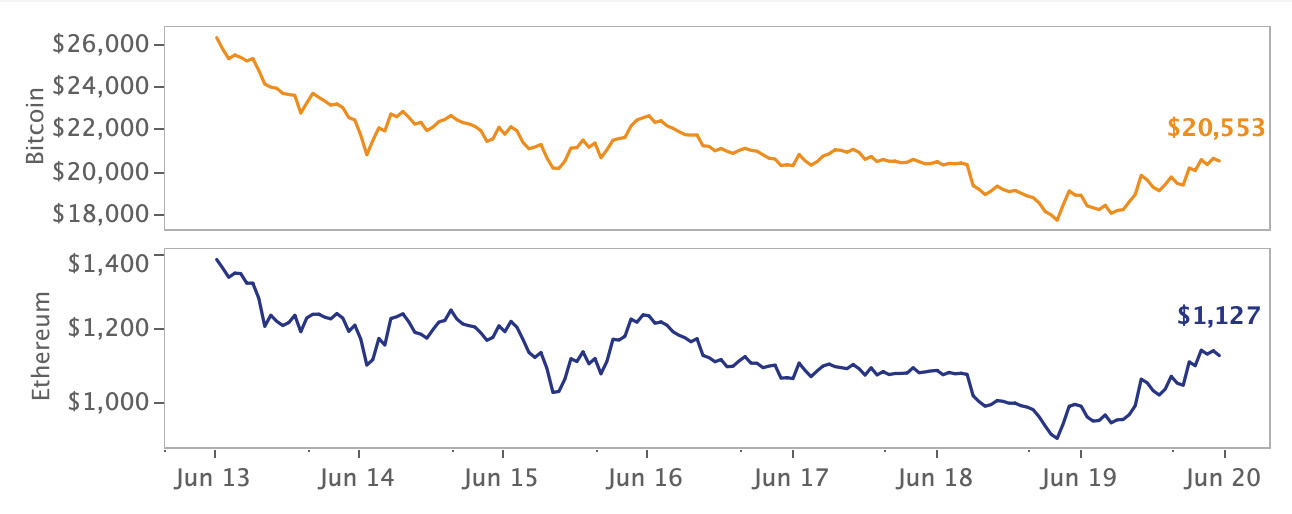
Last week crypto markets went through their version of a credit crunch as it became clear the likes of Celsius and Three Arrows Capital took on too much risk and as a result became forced sellers. Three Arrows Capital reportedly underwent $400mn in liquidations and is currently exploring options that include a bailout. Several smaller platforms such as Babel Finance also halted withdrawals citing unusual liquidity pressures. Bitcoin (BTC) and Ethereum (ETH) prices fell below the psychological level of $18k and $1k respectively over the weekend before rebounding slightly on Monday morning. In the midst of contagion fears in crypto markets, the U.S. Fed hiked its benchmark interest rate by 75bps, its biggest rate increase in nearly 30 years, spurring a broad selloff in risk assets.
Bitcoin registers most negative returns on Thursdays and Fridays in 2022
The price of Bitcoin and most altcoins is down double digits since the start of the year as investors have aggressively slashed their risk exposure. Bitcoin’s returns have been negative on most weekdays, with Thursday and Friday registering the worst performance. This is particularly interesting as most macro data releases tend to be published at the end of the week, suggesting that the challenging macro environment has been a major driver behind Bitcoin’s price action.
wBTC-BTC volumes hit highest levels since the May 2021 crash
Volumes for wBTC pairs expressed in native units surged as Celsius announced that it was suspending withdrawals, peaking on June 18 with nearly 4k BTC traded on the wBTC-BTC pair. wBTC-USD also had a record week, surpassing volumes during the Terra crash and nearly 5x the volume as during the May 2021 crash. Interestingly, wBTC-ETH volumes were significantly (more than 7 times) lower than during the May 2021 crash, suggesting that traders were more eager to move into BTC or USD. wBTC-wETH, the pair traded on DEXs, also had its largest week on record, hitting nearly 130k BTC.
Open interest in bitcoin and ethereum futures falls as markets reduce leverage
Bitcoin and Ethereum perpetual futures open interest plummeted since June 12 as spot prices tumbled to their lowest levels in years, triggering deleveraging and forced liquidations on derivatives exchanges. The amount of open contracts on Bitcoin markets fell by 34% to around $5bn while Ethereum’s open interest was down at a slightly slower pace (- 27%). FTX saw the most dramatic decline which suggests traders were using high amounts of leverage.
Ethereum Funding Rates Turn Negative
Despite the strong drop in open interest on most exchanges, funding rates for Bitcoin perpetual futures remain close to neutral, in sharp contrast to Ethereum which saw its funding rates turn negative. The trend suggests that Ethereum has been hit harder by Celsius debacle as the crypto lender became a forced seller of their Ethereum and staked Ethereum holdings last week.
MicroStrategy under scrutiny as Bitcoin prices sink
The largest corporate holder of Bitcoin - business intelligence company MicroStrategy - has faced increased scrutiny last week on mounting margin calls fears. MicroStrategy started adding Bitcoin to its balance sheet back in August 2020 and has funded the rapid expansion of its BTC holdings with a $200mn Bitcoin-backed loan. This has fuelled speculations that the company may be forced to add collateral or face a margin call after BTC prices dipped to their lowest level in 18 months. MicroStrategy has been trading in lockstep with Bitcoin since 2020, benefiting heavily from the 2020 crypto bull run. However, it has mostly underperformed Bitcoin over the past year and a half.
Risk assets plummet as global central banks step up tightening
Risk assets tumbled last week on revived recession fears after global central banks stepped up monetary tightening to curb galloping inflation. The Fed raised its policy rate by 75 basis points, its biggest increase in nearly three decades. The move follows several large rate hikes by other major central banks this month. Bitcoin's decline has deepened over the past two months, exacerbated by Terra’s collapse in early May and recent concerns around crypto lender Celsius’ and Three Arrows Capital’s solvency. Bonds and equities fell in lockstep with the S&P 500 officially entering bear market territory last week – defined as a 20% or more decline from a recent peak. By contrast, central banks' hawkishness coupled with geopolitical tensions has boosted demand for cash with the U.S. Dollar registering the best performance this year.
Volatility is on the rise
The violent market downturn over past weeks has stirred a spike in volatility. BTC 20D volatility has risen to its highest level in nearly a year last week after retreating slightly at the end of May. Bitcoin’s 180D volatility has been on a continual downtrend since the summer of 2021. However, it appears to be breaking this trend to the upside in early June. The rise in volatility will likely put additional strain on liquidity as traders and market makers choose to stay away from the market during times of market turmoil.


